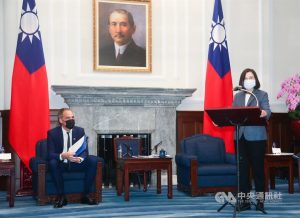 WASHINGTON (Sputnik) – The number of American tourists visiting Russia has grown significantly this year, while Russian exports have also performed well, the Russian Trade Representative in the United States, Aleksander Stadnik, told Sputnik.
WASHINGTON (Sputnik) – The number of American tourists visiting Russia has grown significantly this year, while Russian exports have also performed well, the Russian Trade Representative in the United States, Aleksander Stadnik, told Sputnik.
“Today, American tourists visiting our country rank third after Chinese and German tourists. Since the beginning of the year, the total flow of tourists from the United States to Russia has grown by a quarter,” Stadnik said on Thursday.
Stadnik noted that between 270,000 and 280,000 US tourists visited Russia in 2017.
“That is nearly double the number of tourists from the United States in 2013, after their number decreased in 2014 and 2015,” Stadnik noted.
 Russia-US relations have deteriorated since 2014 after the outbreak of the crisis in Ukraine and Crimea’s reunification with Russia. The United States and some of its allies have imposed several rounds of sanctions against Russia.
Russia-US relations have deteriorated since 2014 after the outbreak of the crisis in Ukraine and Crimea’s reunification with Russia. The United States and some of its allies have imposed several rounds of sanctions against Russia.
READ MORE: Russia Notifies US of Rejection of Several Agreements Within Open Skies Treaty
In addition, the United States has accused Russia of meddling in its 2016 presidential election. Russia has repeatedly refuted allegations of meddling and called the claims groundless.
 US-Russia trade turnover
US-Russia trade turnover
The US-Russia trade turnover has increased by 15-17 percent this year and hopefully the growth will reach 20 percent in 2018, Aleksander Stadnik told Sputnik.
“We expect the year-end results to show that trade turnover has risen by 15-17 percent. We will aim for at least 20 percent next year,” Stadnik said Thursday.
This year’s results indicate an increase of about 2.7 billion dollars in trade turnover as compared to 2016, he added.
Stadnik noted that non-commodity goods account for about 97.5 percent of Russian exports to the United States.
“At the same time, there is growth in exports of our non-commodity, non-energy goods by almost 20 percent, high-tech goods by more than 42 percent, innovative goods by 28 percent, and machinery and technical products by almost 22 percent,” he said. “Commodity exports, despite only amounting to 2.5 percent, have also grown by more than 20 percent.”
Stadnik also said that Russia’s imports from the United States are almost 100 percent non-commodity goods, which grew by 16.5 percent this year.
The import of high-tech goods increased by almost 24.5 percent, innovative goods by 21 percent, and machinery and technical products by 20.5 percent, he added.
“Russian and American business circles are actively seeking new opportunities for mutually beneficial cooperation,” Stadnik said, adding that they are looking into developing sustainable trade, unified and transparent mechanisms and standards for commodity flows, transport and logistic infrastructure.
Stadnik said that regardless of the current state of relations between Russia and the United States in terms of trade and economics, the two countries’ business communities continue to actively engage in mutually beneficial cooperation.

READ MORE: Strengthening of Sanctions to Be Overwhelming Risk for Russia-US Ties — Kremlin
The trade envoy noted that Russia supports such cooperation at the highest levels, citing President Vladimir Putin’s meeting with the heads of some 150 US companies at the St. Petersburg International Economic Forum, as well as meetings that the Russian Trade Minister and Economic Development Minister held with US business leaders in New York ta the invitation of the US-Russia Business Council.
“There were no such initiatives taken by the US,” he added.
Western Sanctions
“The whole period of the latest western sanctions demonstrates that Russia has been successfully resolving import substitution issues with respect to essential goods — the best example is agriculture — as well as attracting investors,” Stadnik said.
Stadnik noted that some investment banks have warned of alleged dangers of investing in Russia given the sanctions, but added that there is no stopping Russia’s economic growth.
“But this is mainly Western banks, such as Merrill Lynch,” Stadnik said. “Russia cannot be stopped by sanctions. This is not a slogan, it is an objective reality, confirmed by the growing macroeconomic indicators and the growing authority of our country.”
In the spring of 2014, after Crimea reunified with Russia, the United States and EU restricted the access of the largest Russian banks and companies to Western financing and introduced sectoral sanctions.














 WASHINGTON (Sputnik) – The number of American tourists visiting Russia has grown significantly this year, while Russian exports have also performed well, the Russian Trade Representative in the United States, Aleksander Stadnik, told Sputnik.
WASHINGTON (Sputnik) – The number of American tourists visiting Russia has grown significantly this year, while Russian exports have also performed well, the Russian Trade Representative in the United States, Aleksander Stadnik, told Sputnik. Russia-US relations
Russia-US relations US-Russia trade turnover
US-Russia trade turnover







 The new flight schedule for the W21/22 season began on 31 October 2021. For Budapest Airport, this means an exciting mix of new routes, resumed services, and significant frequency increases.
The new flight schedule for the W21/22 season began on 31 October 2021. For Budapest Airport, this means an exciting mix of new routes, resumed services, and significant frequency increases.


 Intercontinental Hotels and Resorts célèbre son anniversaire de diamant avec éclat, en proposant aux voyageurs
Intercontinental Hotels and Resorts célèbre son anniversaire de diamant avec éclat, en proposant aux voyageurs 



